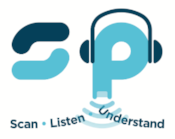Tips for a Smooth Transition Between Year 6 and Year 7
Whether it’s a memory you’ll never forget or something you can barely remember, walking into secondary school for the first time is a scary moment. Gone are the classrooms, playgrounds and familiar faces you’ve grown up with. Everything is so much bigger and unfamiliar. And with new subjects and new challenges, and the changing workload can intimidate even the brightest of students.
These worries might be even more pronounced in students with dyslexia or literacy difficulties. Less confidence in their reading ability can lead to ideas of exclusion or anxiety. This can sometimes make students who learn and think differently feel like they’re falling behind.
There are a number of things that you can do to make the transition to secondary school a much easier experience. The journey to high school is a vital part of growing up and becoming an independent learner. And although different students excel at different things, an educational experience with a strong reading foundation is important in helping them grow up ready to take on the world.
Talking is Key
Communication is key. Parents often reach out to their secondary school before September to reassure students who are feeling anxious. Scheduling these early meetings with new learners with their parents present can often make students feel less isolated. It can also open up conversations about what help is available to them if they’re neurodiverse or have different needs to their peers. This kind of support network and familiarity can also make students feel more confident in speaking up when they feel that their needs aren’t being met, too. As an educator, it’s important to establish from the get-go that these channels of communication are always open, whether it’s about the work or something else that’s on their mind – what matters is that students know they’re supported on both sides.
Listen to Their Needs
Sometimes, just listening can help. When students are nervous or feeling isolated, although it might be instinctive, one of the worst things you can do as an educator is just tell them ‘things will be alright’. If you can explore why they’re feeling anxious or why feel they’re not having the same experience as their classmates, it becomes much easier to see where these fears are coming from. This makes it easier to find the help that they need. Many students who struggle with reading feel that they’re just not cut out for academia. Nothing could be further from the truth! That’s why it’s important to listen when they’re feeling disengaged, and to look together for solutions.
It’s also important to understand that some students might have anxiety about things other than learning. Many students are very good at making friends and love to chatter. Yet some feel intimidated by the new social relationships that secondary school can mean. Help out by practising with them! Sometimes, it’s easier to strike up a conversation with someone new if you’ve already been over a few conversation starters beforehand. This could even be made into an in-class activity, or a take-home activity to work on with parents or siblings.
Practice Makes Perfect
For some students, the big day won’t be as scary if you’ve done it all before. So, a ‘dress rehearsal’ scenario can really help to get a handle on the back-to-school nerves – if you’re a parent it’s worth thinking about, and if you’re an educator, it’s worth recommending.
Waking up to get ready for school, preparing their school essentials, popping on their uniform, and heading on out for a practice run to the school gate a few times might seem overkill, but it’s a great way to break the anxiety cycle and make the routine change feel manageable. With the switch to high school, another thing that might come into play is a reliance on public transport – it’s a great idea to practise taking these routes beforehand so that students can travel with confidence, as nobody wants to be late on their first day!
Assistive Technology
Many schools have a range of practitioners whose role it is to support students with dyslexia or reading difficulties. Although this is an important support mechanism for some, other students can feel isolated or observed when sat next to a staff member sometimes.
This is where assistive technology comes in. Reading windows, reading lines and text-to-speech items like scanning pens can open up all kinds of writing, from homework to novels. Devices like scanning pens also have the added benefit of making students feel independent. This helps combat the idea that they’re relying on somebody else to support their learning experience. Most scanning pens are also small, rechargeable and portable.
As well as being convenient, it means that they’re easy to use at home as well as in the classroom, which can encourage reading for pleasure during evenings and weekends- as an educator, it’s important to make sure that students are aware of this kind of support, and tohelp students find in-class solutions that work for them.
Assistive technology is not just for students with literacy differences or dyslexia either – almost every child can benefit from the addition of a reading support device into their learning toolkit, and it can make reading feel much more interactive and fun.
Moving schools is never easy. And many people find that the transition between primary and secondary schools is one of the hardest things we do as a child. However there is now a wealth of technology and assistance that can make the learning curve easier. By engaging with this, and making sure students are well supported in all they do, it can give them the confidence and skills that they need to achieve the results they deserve.
